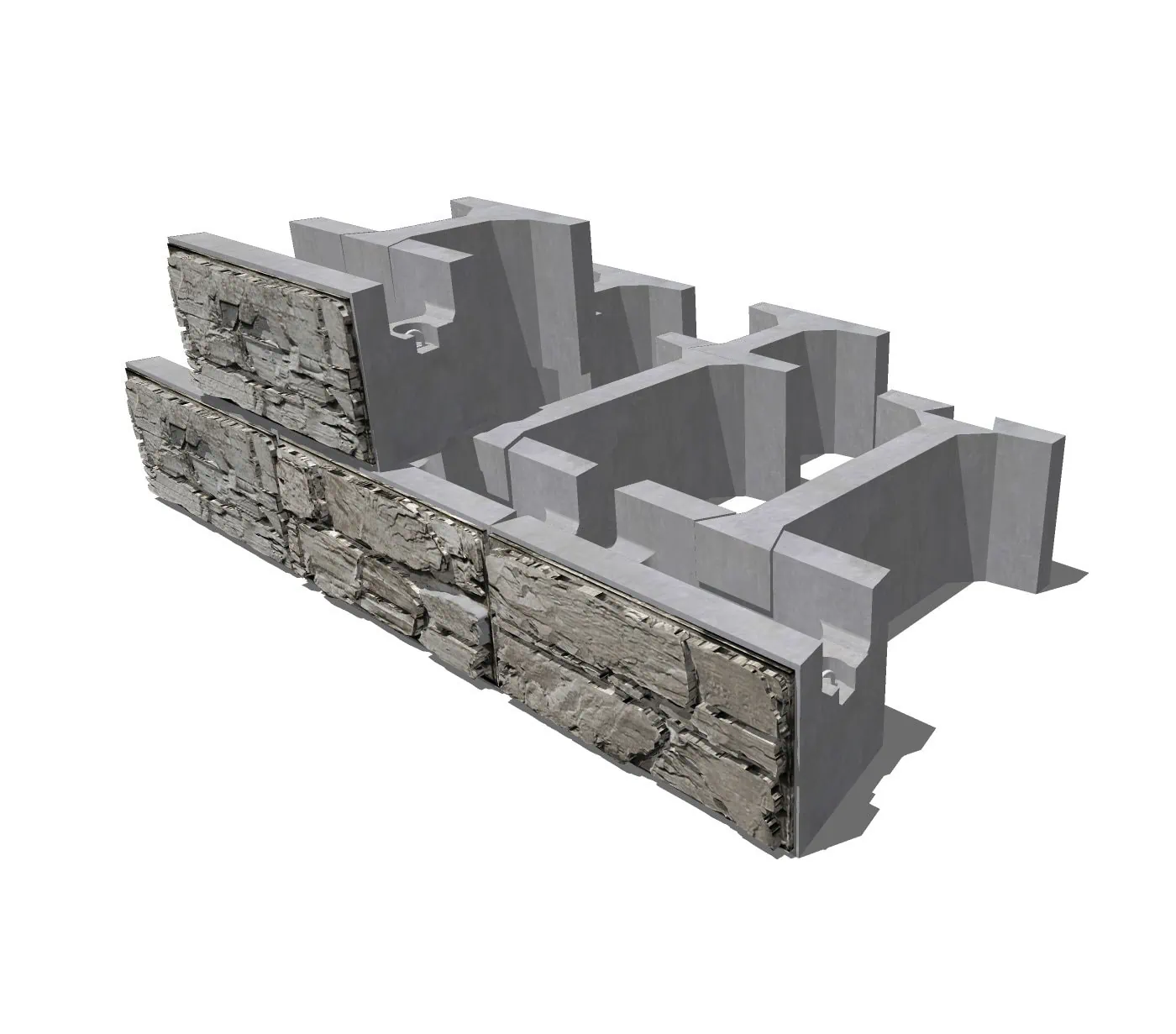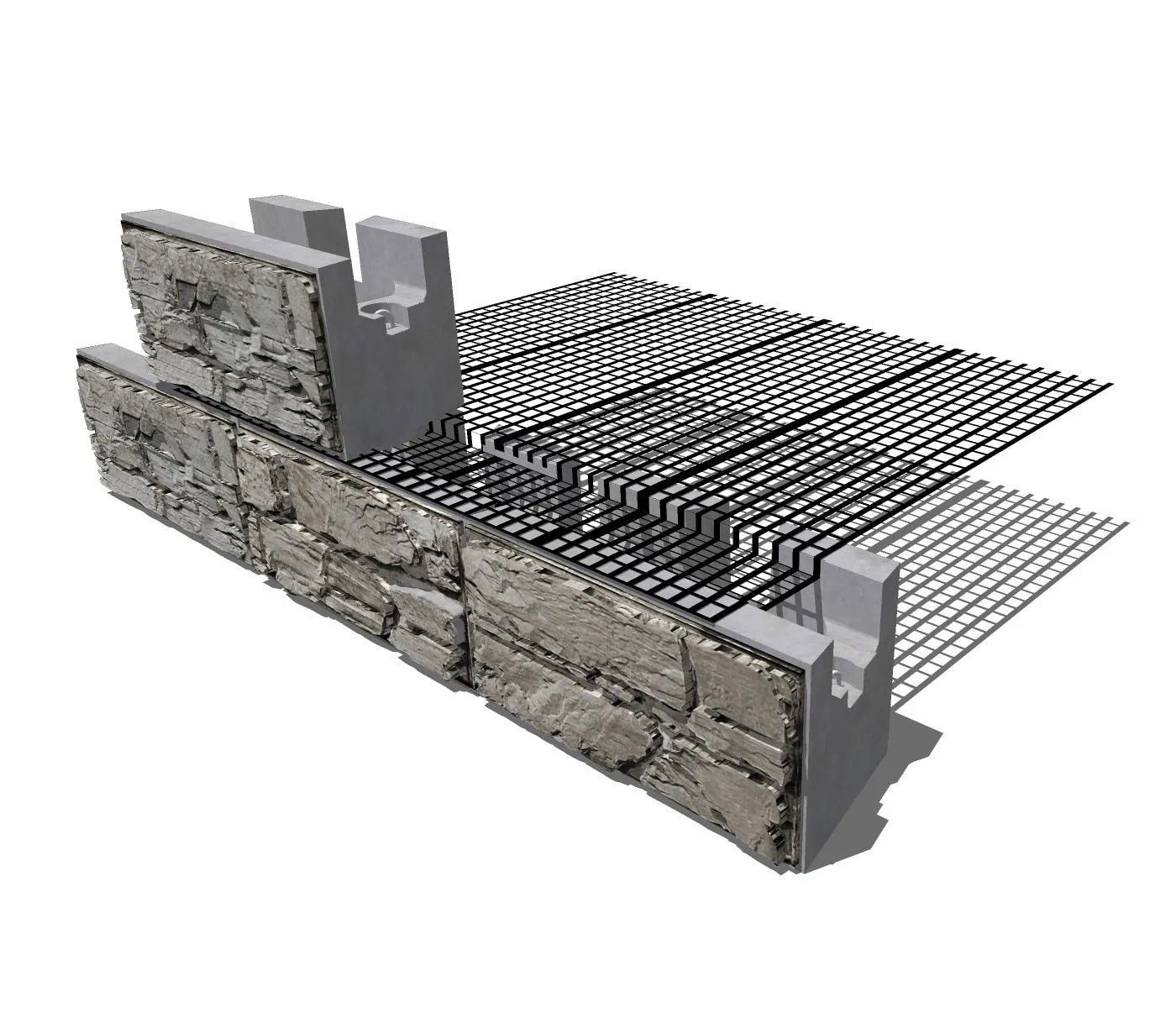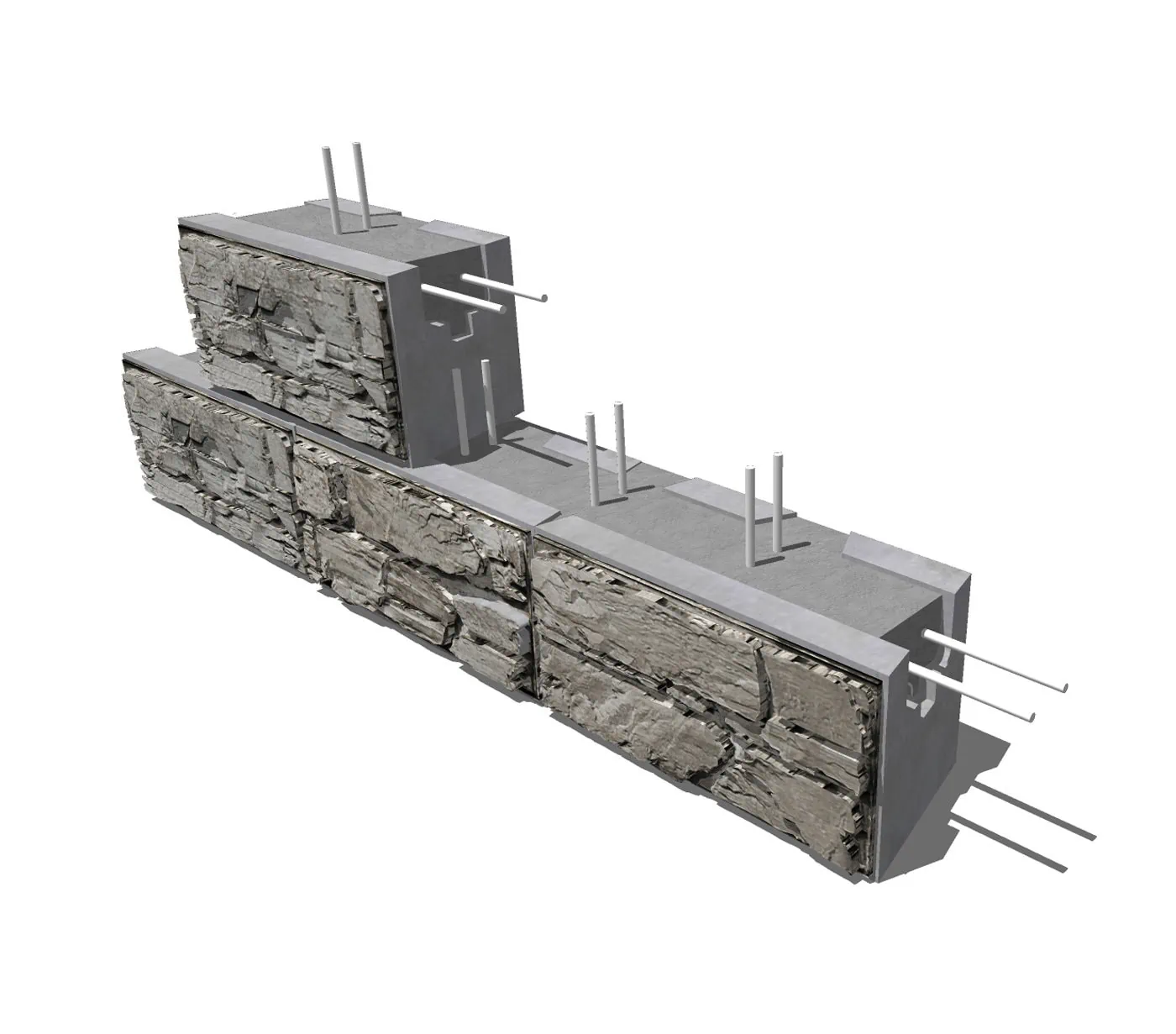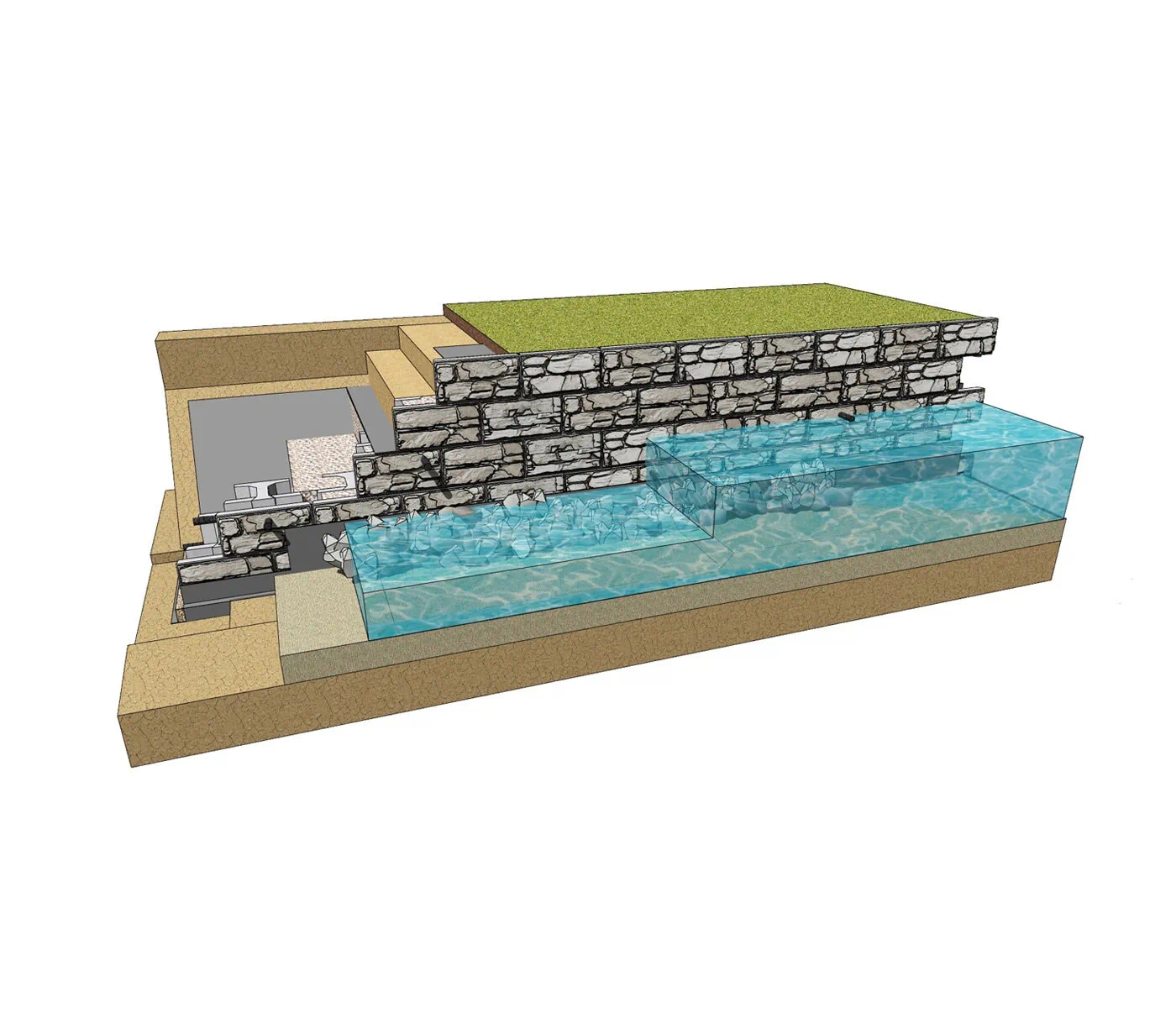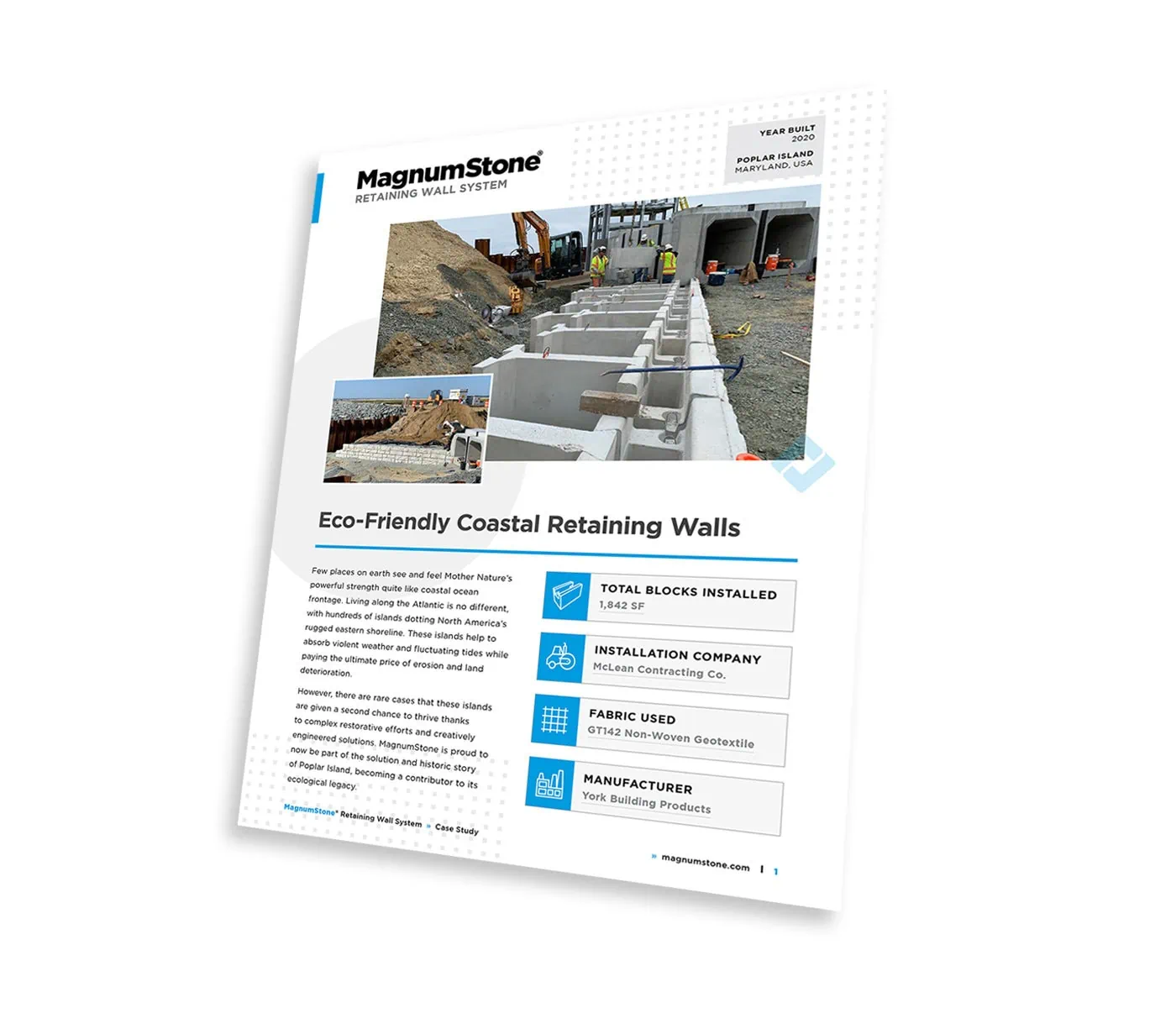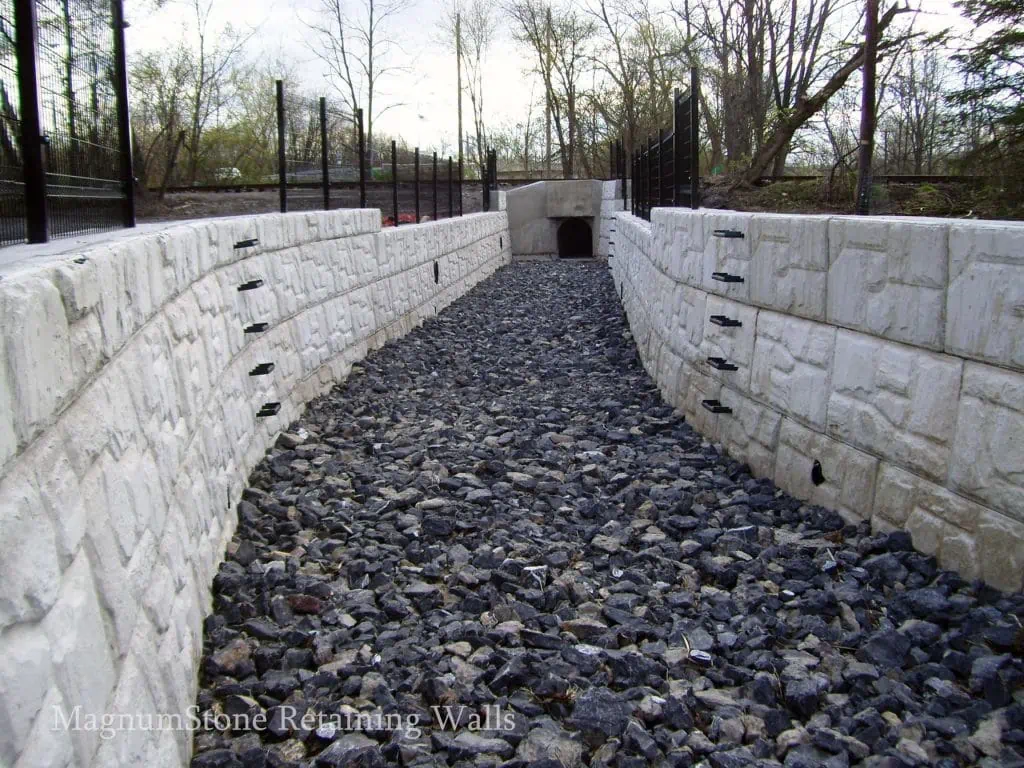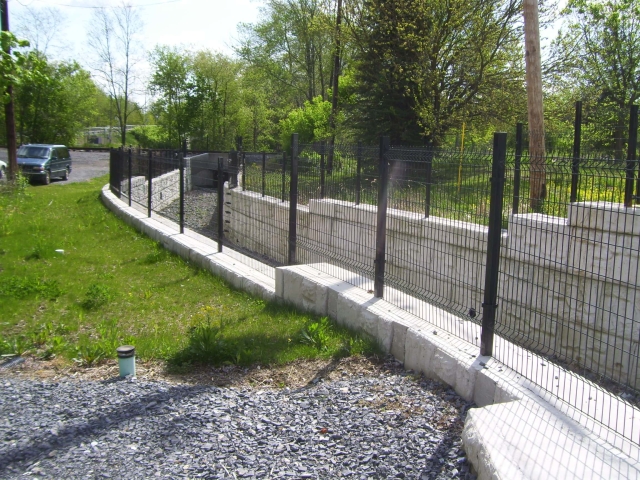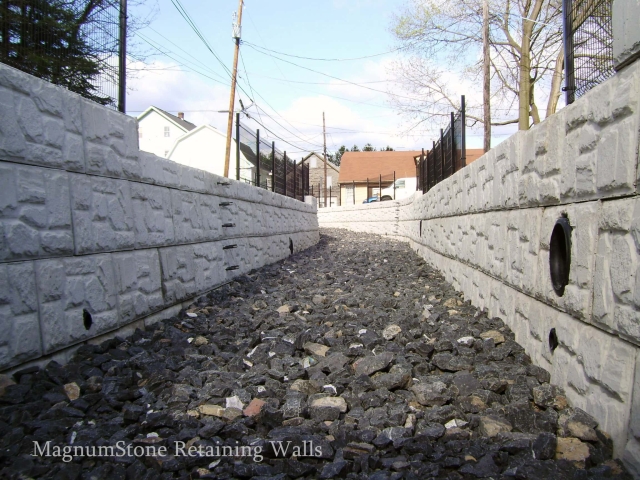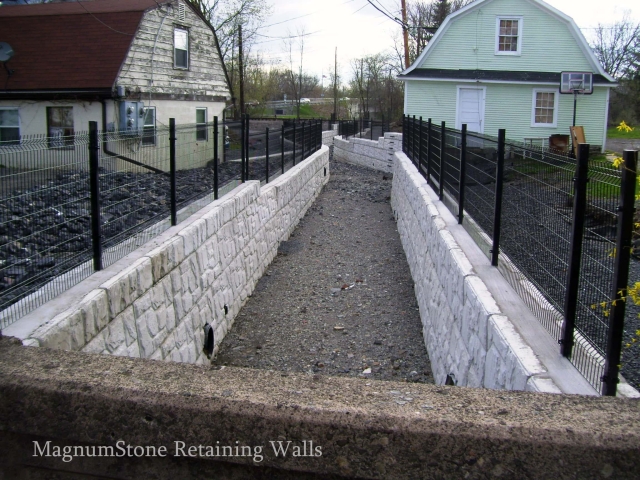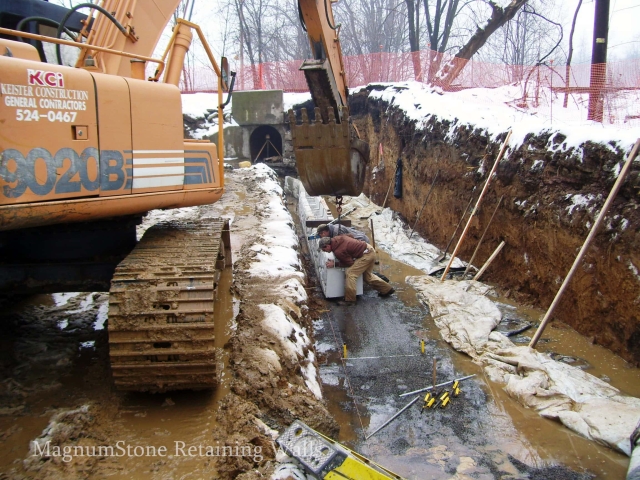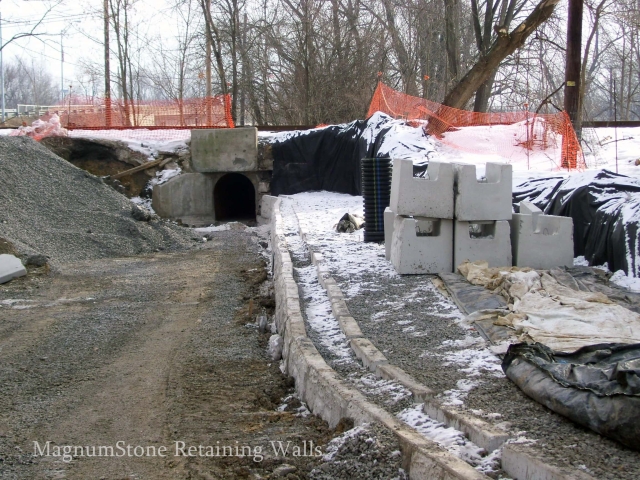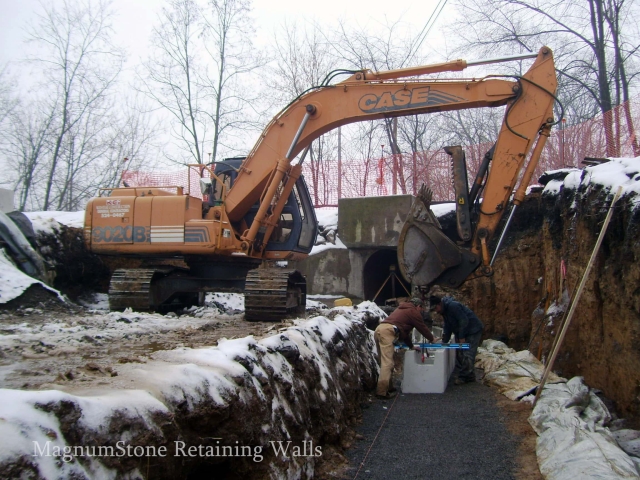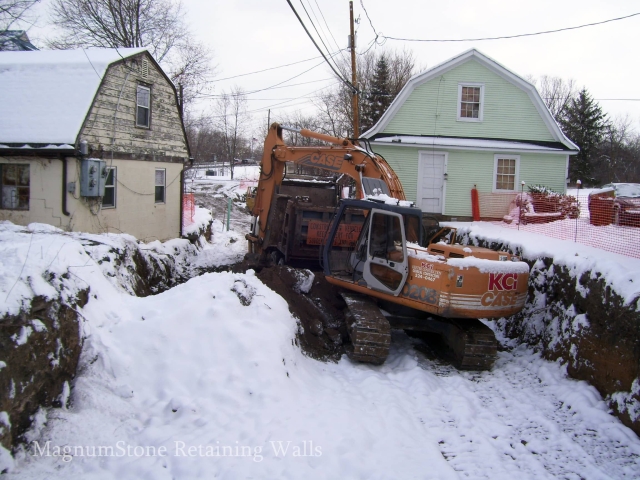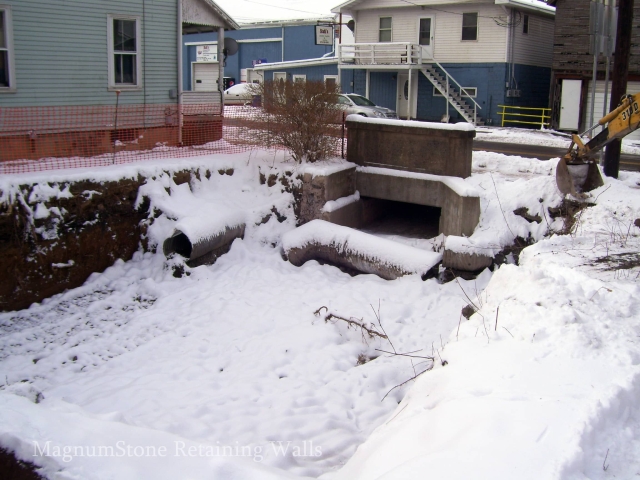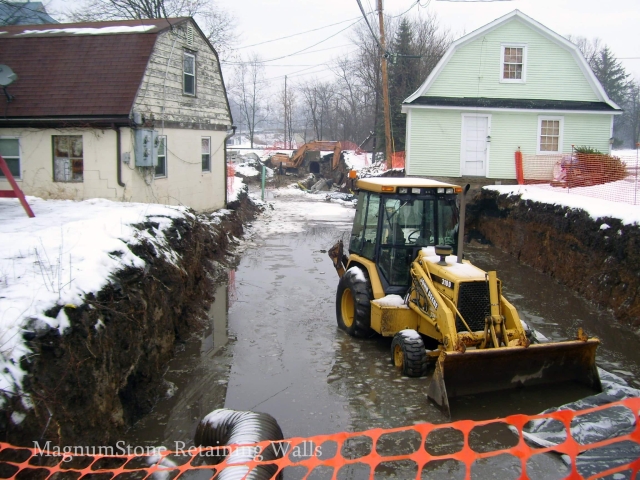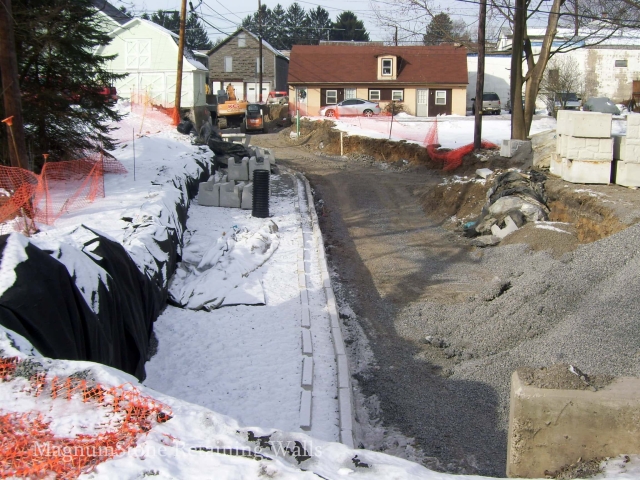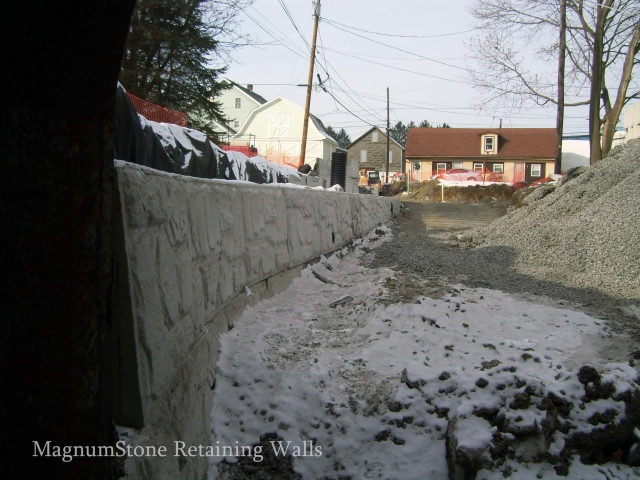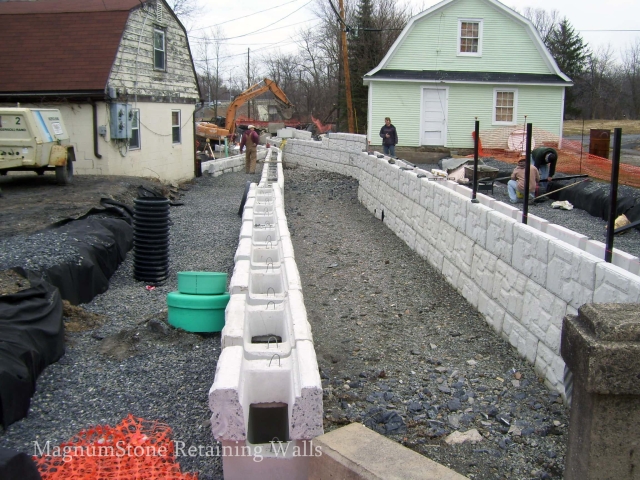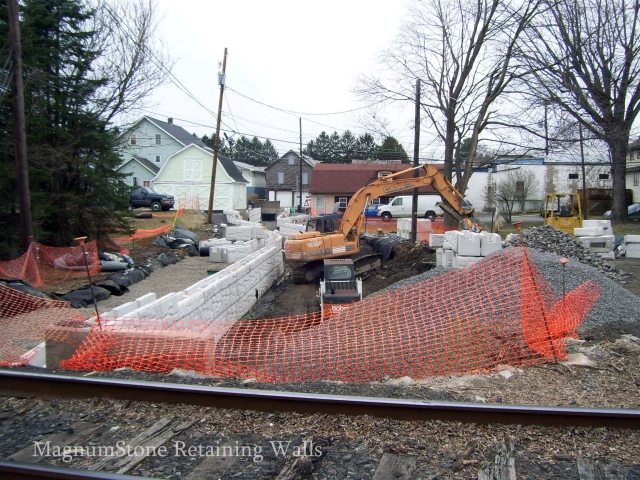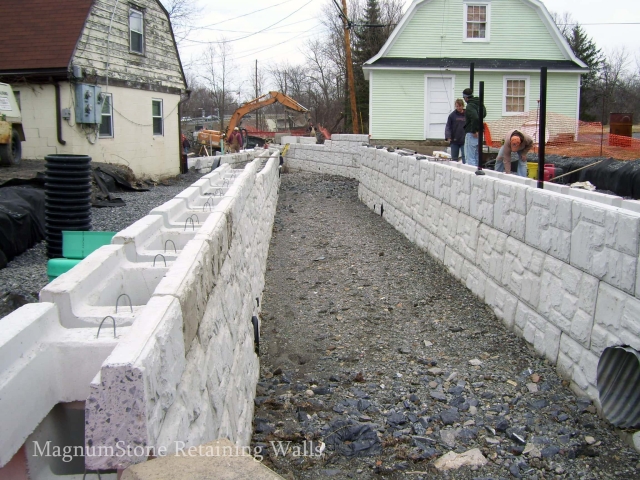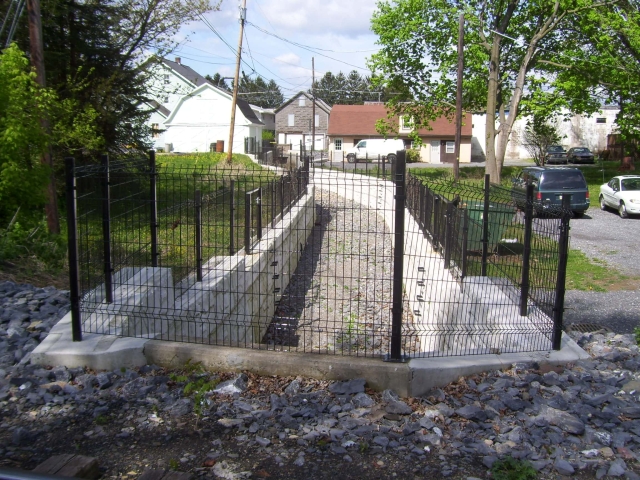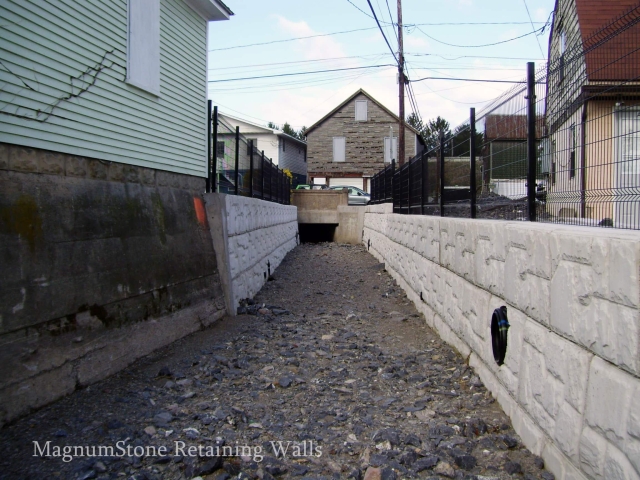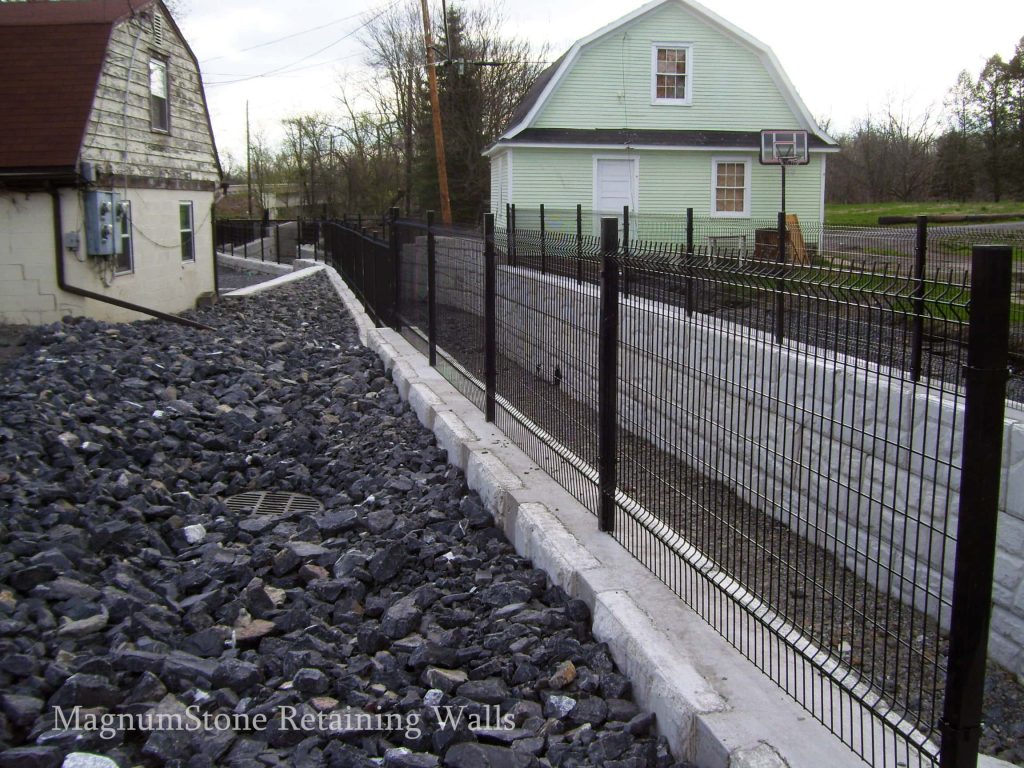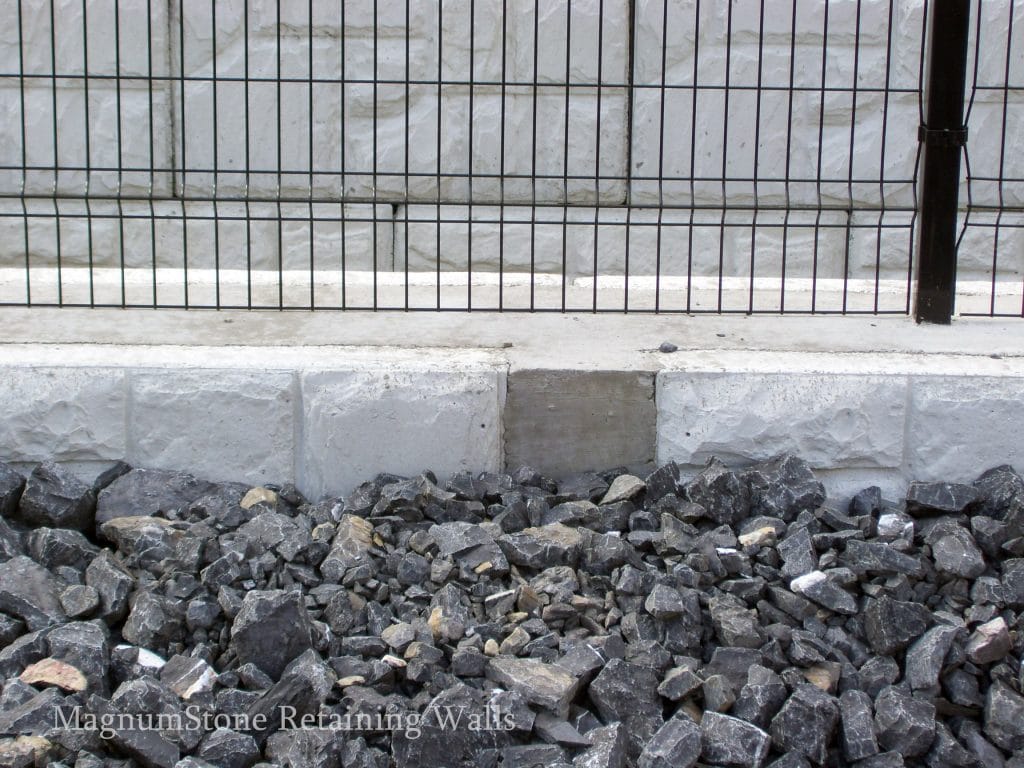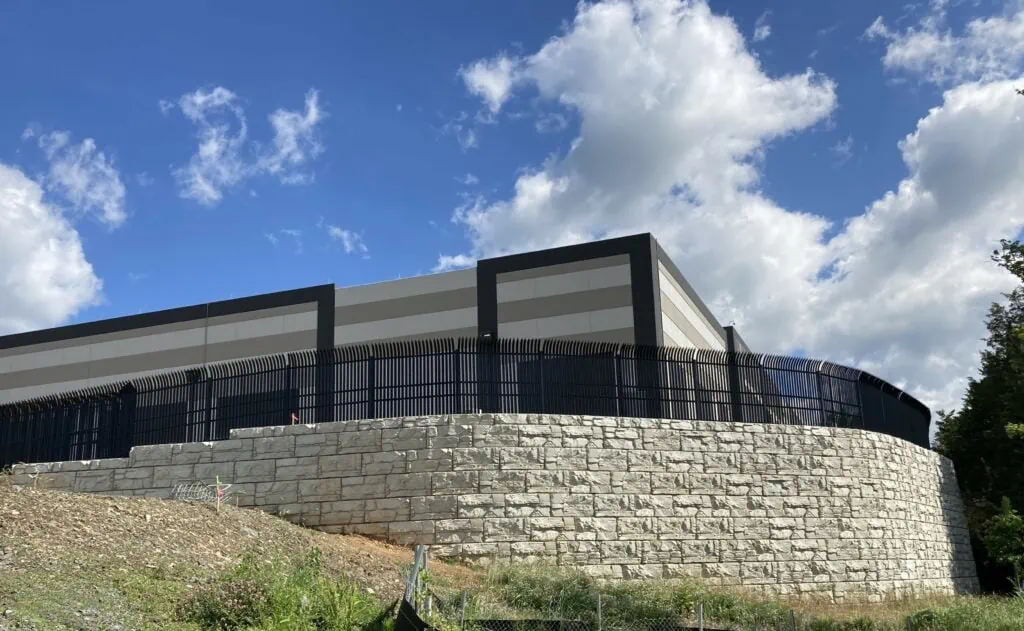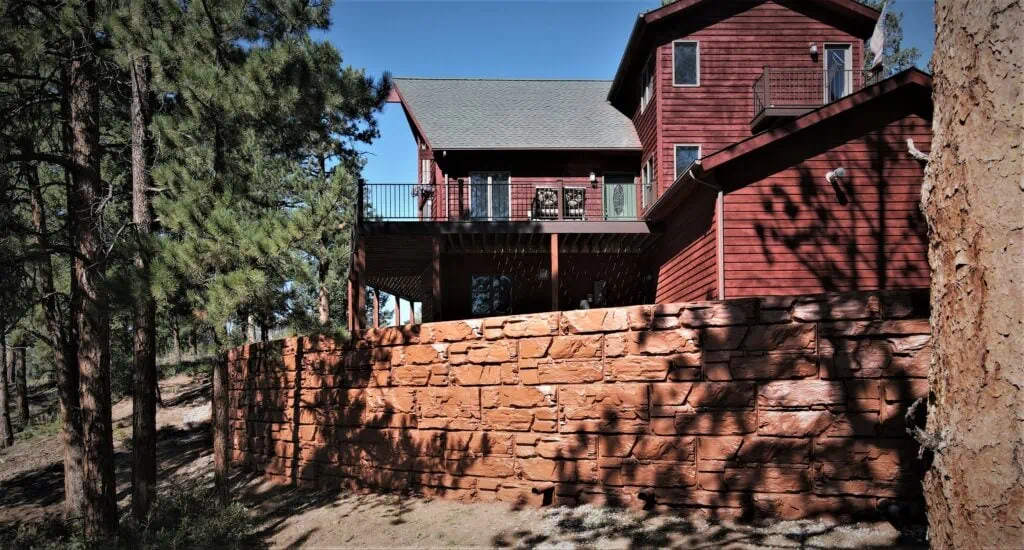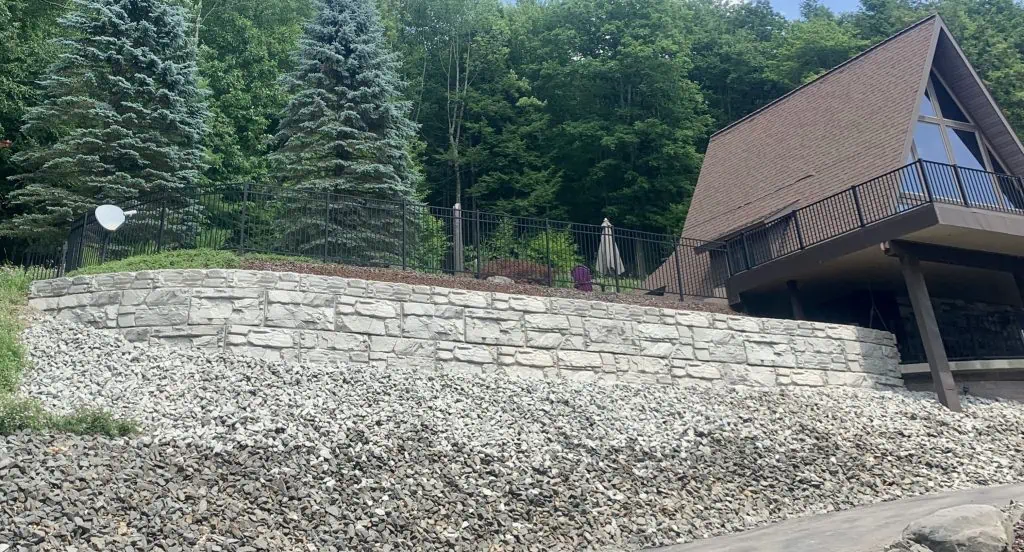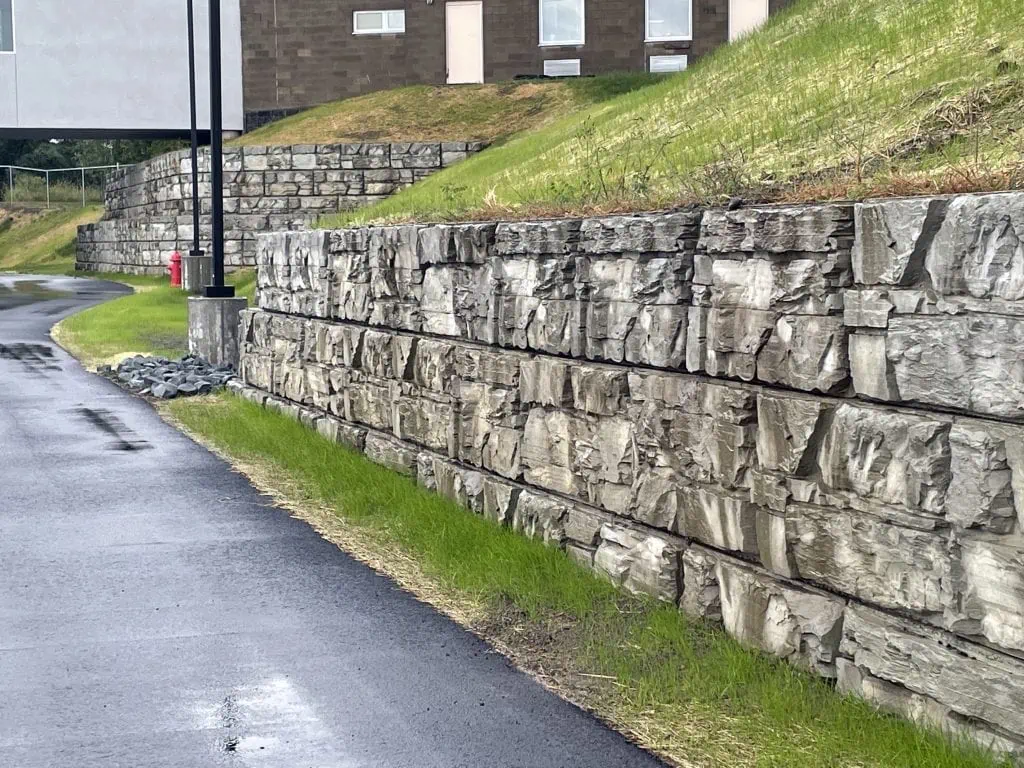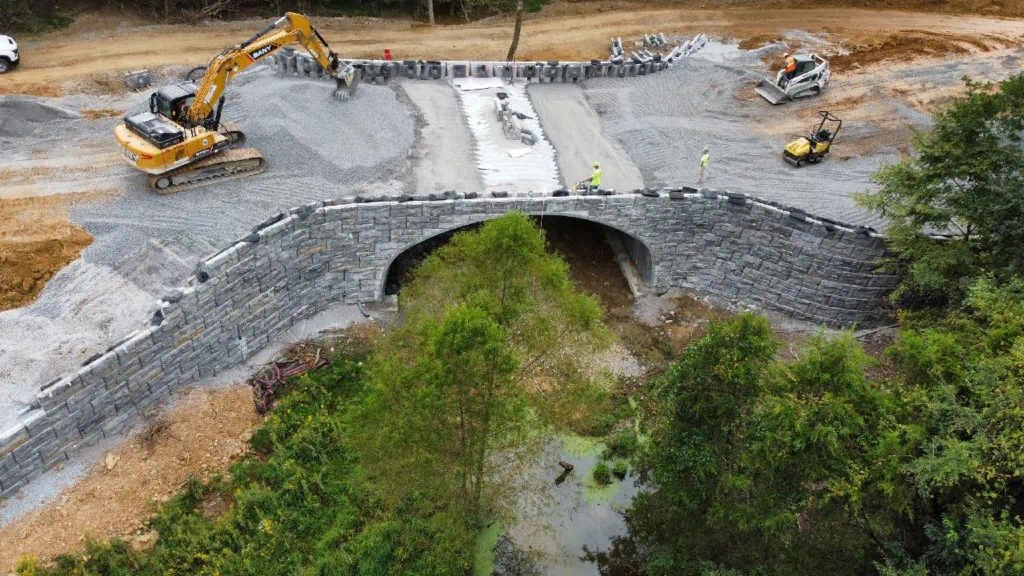MagnumStone Retaining Walls Excel in Stream Bank Protection
Stormwater management has become a critical component of infrastructure and new developments worldwide. From bustling cities to the quaint community of New Columbia, Pennsylvania, these sophisticated drainage systems are often an unsung hero. MagnumStone retaining walls have become a powerful component of stormwater systems for decades, as exemplified by the West Milton Stormwater Improvement project.
The West Milton Stormwater Improvement project was the rehabilitation of a stream which runs through the town under several streets and a railroad track. The SEDA-COG (SEDA Council of Governments) group, owner of the project, received funding to rebuild the old stream banks. This canal-shaped stormwater management system was built in 2011 to protect nearby homes, businesses and utilities from potential water erosion.
The original was a conglomeration of failing walls of various types that required major upgrades to handle potential hazards flooding and scouring. By rebuilding the stream banks with MagnumStone retaining walls manufactured by York Building Products, the community gained a proven system to effectively convey stormwater.
Stormwater Management Hazards & Solutions
The wide-ranging effects of storm surges produce runoff from paved surfaces and infrastructure, including roads and parking lots. With severe storms that batter the United States’ eastern seaboard, inadequate stormwater management systems can have devastating impacts on communities.
Flooding, erosion and scouring from prolonged rainfall events can cause major damage, therefore stormwater conveyance and drainage channels are installed as a safety and preventative measure. MagnumStone retaining wall systems are renowned for their flexible functionality, providing remarkable solutions for structures of this nature. The project’s engineers, ELA Group, were no strangers to MagnumStone blocks and chose them for this project because of their multifaceted versatility.
How do Stormwater Conveyance Systems Work?
Throughout heavy rainfalls, runoff is controlled and collected by stormwater conveyance channels via elaborate underground piping systems. Commonly via street gutters, water is directed toward stormwater drainage systems, a graded streambed lined with large stones along the bottom.
Upon arrival, water is guided downstream to a larger water source such as a river, lake or stream. The large stones along the base perform key functions and serve important purposes as water travels downstream. The rocks primarily slow down the initial influx of water, thereby preventing erosion and scouring caused by large intermittent volumes of water.
They also treat and act as a filter for any debris, sediments and contaminants that may have come with the stormwater from paved surfaces. The sediments and nutrients settle below the rocks and allow the treated water to flow onward. This natural process of water treatment is efficient and effective in contributing to healthy ecosystems and habitats for wildlife downstream. MagnumStone’s eco-friendly design uses 40% less concrete than solid concrete systems, creating a dynamic, sustainable feature for stormwater systems.
Resiliency of MagnumStone Retaining Walls
The ELA Group was very familiar with the capabilities of the MagnumStone’s retaining wall system, having used it to design a stream project before. They preferred to use the large wet-cast MagnumStone system where the potential of dangerous seasonal storms could cause scouring from large volumes of water rushing down the streambed. An additional benefit of MagnumStone’s precast manufacturing process is that it results in low water absorption. That often-overlooked feature provides further weatherproofing and allows MagnumStone to excel in water applications, preventing wall failures.
Per the scour design analysis requirements, two full courses were embedded below the ground surface. The geogrid zone was backfilled using #57 stone to facilitate the potential rapid accumulation of excessive water in flood conditions. Further strengthened by geogrid, the MagnumStone walls can withstand heavy loads and pressures, including the infrastructure surrounding this project.
Double-sided blocks were utilized for the top course of the retaining wall stream banks as a barrier and parapet. To optimize land, a fence was mounted directly into the concrete-filled hollow cores of the MagnumStone blocks’ top layer.
Stormwater Channel Safety Measures
To prevent humans, wildlife and debris from getting caught in the stormwater system, additional safety measures were put in place along the MagnumStone streambeds. Fences were installed along large sections of the stream banks to deter falls and accidents around the stormwater system.
Ladder rungs were also incorporated into the system design for deep areas where children could potentially get caught during storm surges. This excellent feature by ELA Group emphasizes the importance of safety among the multitude of hazards that can arise from storm scenarios.
MagnumStone Stream Banks Outlast Tropical Storms
The job started under very difficult construction conditions with melting snow inundating the site in February of 2011. Luckily, the experts at Keister Construction made quick work of MagnumStone’s easy and efficient installation to overcome such a challenging situation. Their team delivered a beautiful, structurally sound retaining wall – a perfect fit for the community of New Columbia, Pennsylvania.
Shortly after construction in the Fall of 2011, the West Milton Stormwater Improvement project survived its first true test. Tropical Storm Lee rolled through the state of Pennsylvania dumping more than 15 inches (over 38 cm) of continuous rain over several days. The MagnumStone retaining walls performed terrifically, protecting the community and preventing immeasurable damage.


